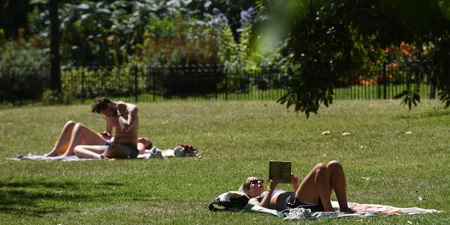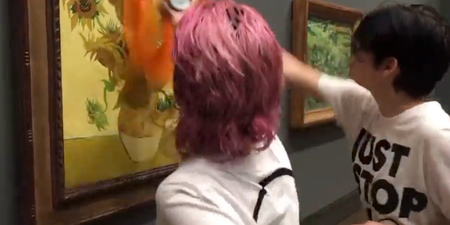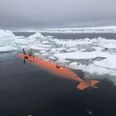Humans are not the only ones at risk
Honey bees could suffer a rather tough death if temperatures get even more out of control.
A national emergency has been declared and a large chunk of England has been put on a red weather warning for the first time in history. Temperatures are currently forecast to hit 40C, with high risk to transport, infrastructure and, crucially, life.
⚠️⚠️🔴 Red Extreme heat warning issued 🔴⚠️⚠️
Parts of England on Monday and Tuesday
Latest info 👉 https://t.co/QwDLMg9c70
Stay #WeatherAware ⚠️ pic.twitter.com/YHaYvaGh95
— Met Office (@metoffice) July 15, 2022
What’s more, according to research it won’t just be humans who are at risk of fatality amid the scorching heat.
Dr Alison McAffee, a postdoctoral fellow at the University of British Columbia’s Michael Smith Laboratories, explained the unusual way in which male bees die when they get too hot.
She told Metro: “When drones [male bees] die from shock, they spontaneously ejaculate. They have this elaborate endophallus that comes out and is about the size of their own abdomen. It’s pretty extreme.”
The researcher first became aware of the phenomenon in 2021, when she noticed a significant number of bee deaths after a heatwave in British Columbia.
Beehives normally sit at a temperature of 35C and while the bees in Canada should’ve been able to cope with higher temperature, the heat caused a lot of them to die. Dr McAfee said that after six hours at 42C, half of male bees will die from heat stress.
She said: “The more sensitive ones start to perish at two, or three hours. That’s a temperature they shouldn’t normally experience, but we were seeing drones getting stressed to the point of death.”
Following this realisation, researchers started testing several methods of insulating beehives in a bid to stop another mass-death situation in future heatwaves. Coating beehives with a protective polystyrene cover, for example, can help them cool down by up to 3.5C.
It’s going to be super hot again today – don’t forget to drink water – and don’t forget the wildlife as well! Put out shallow dishes of water for our bees 🐝 and birds #urbanwildlife #dehydration #heatwave https://t.co/WkaBFCqubf
— Canal Club Community Garden 🍃 (@canal_community) July 12, 2022
The researcher believes male bees could be one of the most effective ways of understanding climate change.
She said: “Drones have the advantage that they are very sensitive and easy to see. If drones are dying, it’s much easier to study them than to take a queen from a colony to perform tests. It’s also more conducive to citizen science efforts.”
The bee population is integral to our own survival, with plant pollination affecting many ecosystems. Research published in April found that the climate crisis could lead to more small-bodied bees but fewer bumblebees, with researchers warning of potential “cascading” effects on plant pollination and across whole ecosystems.
A whopping 75 per cent of the top 115 global food crops depend on pollination, according to the study. The main drivers of extinction are thought to be habitat loss and pesticide use.
Related links:
- Red extreme heat warning: What it means and how worried you need to be
- You might soon be able to stop working if your office gets too hot as MPs table motion
- Don’t Look Up: Tory leadership candidates rip up climate pledges as Britain bakes in the heat





















































